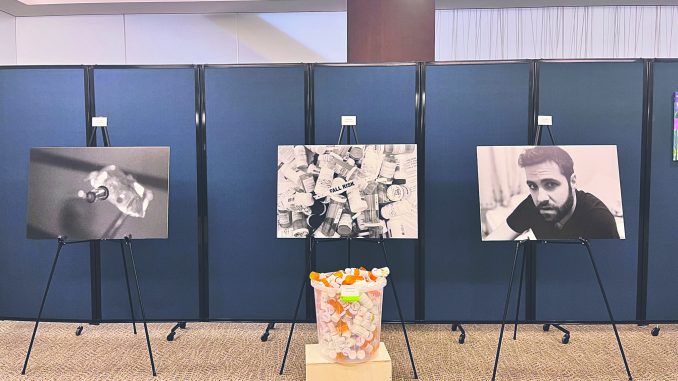
Expressing life with epilepsy through art
According to the Epilepsy Foundation, epilepsy is defined as a brain condition that causes reoccurring, unprovoked seizures. It’s a condition that is often misunderstood in media and falls under the radar, even though it’s the fourth most common neurological condition in the world.
On Jan. 20, the Zucker School of Medicine at Hofstra University in Hempstead hosted the art gallery, “Spark of Creativity,” to showcase artwork, spoken word and written word from artists with epilepsy or loved ones of a person with epilepsy. It was a night of starting conversations and building bridges of understanding for the many experiences people have with epilepsy.
The show was organized by two doctor candidates at the Zucker School of Medicine, Patrick Tierney and Justin Esposito.
“It started with Patrick and I being interested in neurology as a special interest for us,” Esposito said. “We wanted a unique event that would explore unique experiences from people with neurological conditions. After speaking with [Dr. Simona] Proteasa, we settled on epilepsy as the best example of that, as a neurological illness where people can have pretty much any symptom. The seizure can take so many different forms. It’s an individual experience and also something that’s widely misunderstood too.”
Daniel Hopper, who has had epilepsy for 18 years, was among the artists featured in the show. His project, My Journey with Epilepsy & Photography, included three photos and a bucket full of empty prescription pill bottles. The first photo in the series showed a blurry IV drip. Hopper said it was meant to convey what it’s like waking up from a seizure, and the IV drip being the first thing you see.
“In the project I have black and white photographs signifying seizures and the life with epilepsy,” Hopper said.
The photos, shot on 35 mm film, were part of a project called Seize, a project that includes a mix of black and white and color photos to depict that while living with epilepsy can be gloomy, there are also plenty of moments with happiness and joy.
In general, Hopper has found photography as a way to heal and get a break from the many struggles epilepsy brings to his life. He’s also worked with epilepsy patients afraid of flash photography, providing them with flash-free, professional family photographs.
Also among the artists featured in the gallery was an author, Marc Palmieri, who wrote the book She Danced with Lightning, and his daughter Nora Palmieri, who created art inspired by her sister Anna Palmieri’s experience with epilepsy.
“She was diagnosed at five-months-old, she got brain surgery in 2018,” Marc Palmieri said of his daughter, Anna Palmieri. “She had thousands of seizures before the surgery, but she is now seizure free. I wrote the book, it’s a memoir, about living with a child with this kind of deadly condition. But it’s also about what she taught me; courage and desire to live a full life even when facing what was a very dangerous and dire spiral of her condition when she was 12-years-old.”
A cover of the book, as well as Nora Palmieri’s artwork, was presented at the gallery.
Poet and artist Alyssa D’Amico had her artwork showcased. She had the chance to read several poems she’s written recounting her experience with epilepsy, from childhood, to teenage-hood and adulthood. She discussed friendships, crushes, and the confusion she grew up feeling with epilepsy. Her poetry reminded the audience that even when facing such a frightening condition, people with epilepsy still go through the everyday experiences.

